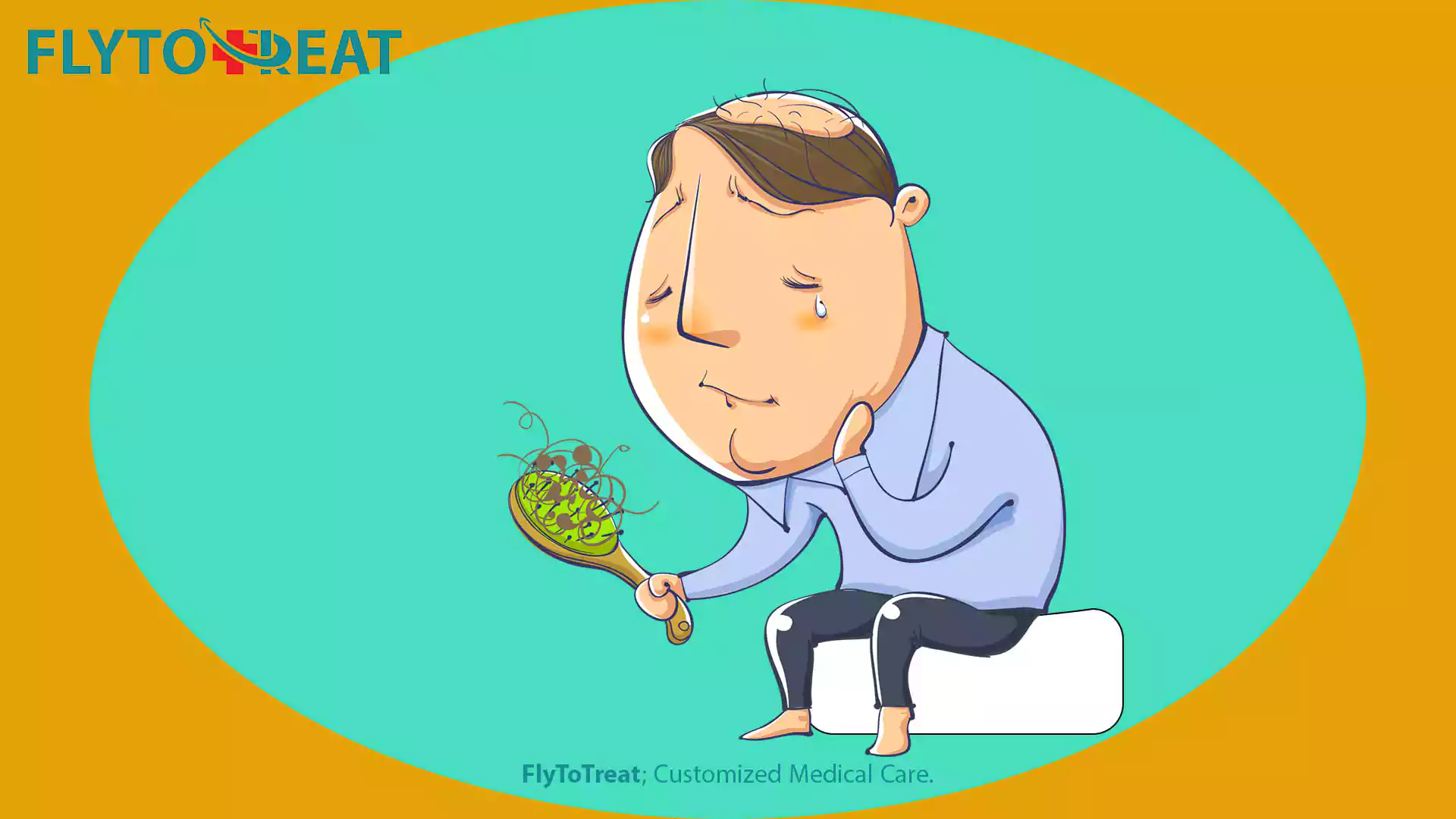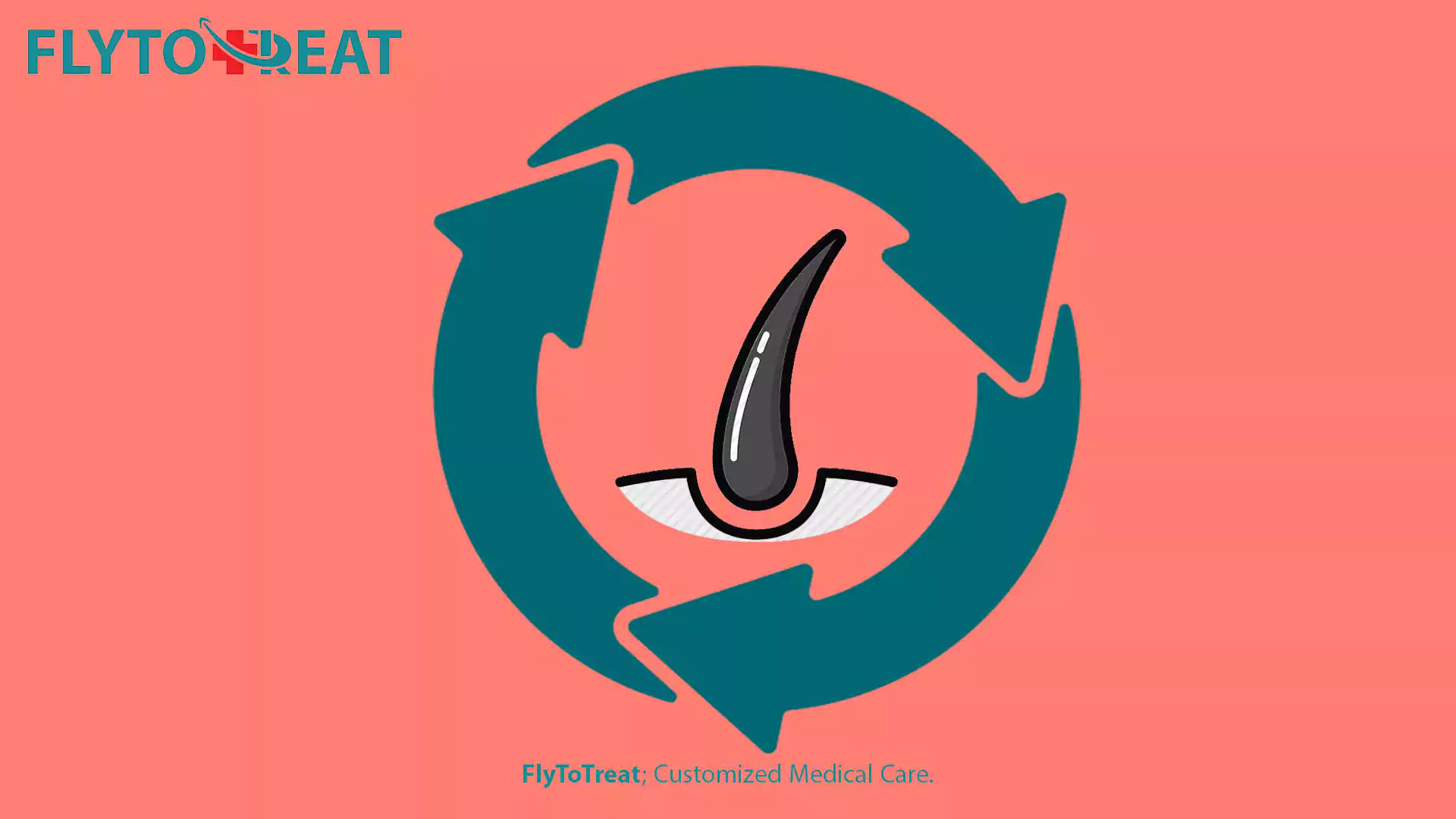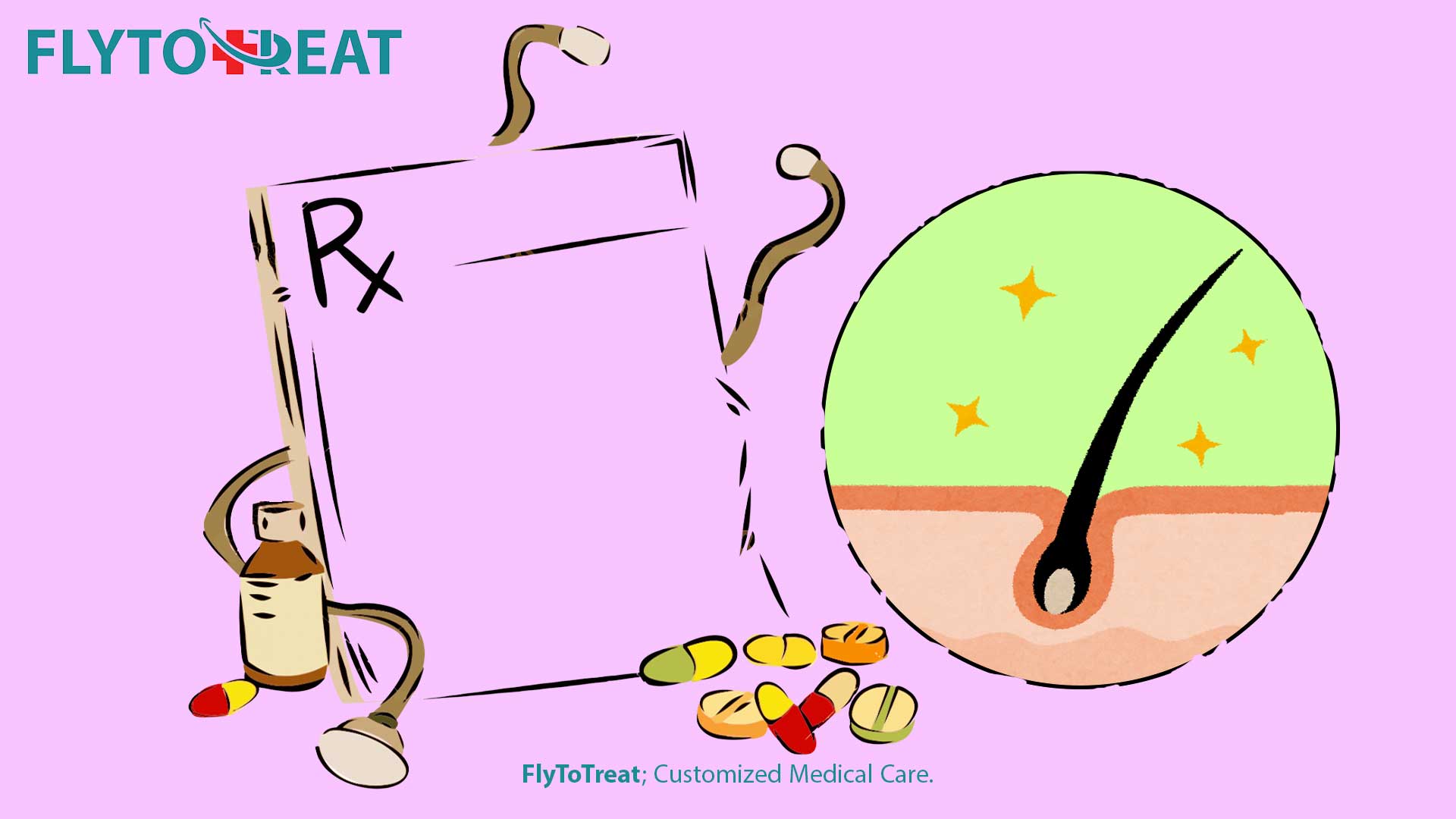
Hair Transplant in Turkey
What Is Hair Transplant?
A hair transplant is a surgery that surgeons use to thicken or replace hair in your head or body areas that are thinning or balding. It involves grafting hair from thicker sections of the scalp or other body parts to the body areas that are getting thinner or bald. Hair transplant in Turkey is one of the most successful cosmetic procedures in the world.
Approximately 60% of men and 50% of women worldwide suffer from hair loss.
In the first transplant, single scalp hairs were used, and that was performed in Japan in 1939. In the decades after that, physicians developed the "plug" procedure, and large tufts of hair were transplanted. As time went on, surgeons began to use mini-and micro-grafts to increase the appearance of transplanted hair on the scalp.
Hair transplant in Turkey is done with the latest method of the day.

What Causes Hair Loss?
- Hereditary hair loss
This is a common reason for hair loss in both men and women, and reports have shown that this is the most common cause of hair loss worldwide.
In men, we call it "male pattern hair loss," and "female pattern baldness" is used for the condition in women. The medical society calls it androgenic alopecia, the term for hair loss in both men and women.
Whatever title you pick, you've inherited genes that cause your hair follicles (which each hair grows out of) to shrink and stop producing hair. In some cases, shrinking may begin as early as their adolescent years, but it usually happens later in life.
Overall thinning or a widening part is usually the first noticeable sign of hereditary hair loss in women.
In men, hereditary hair loss usually starts with a receding hairline or bald spot at the top of their heads.
With the help of a good treatment, you can stop or slow your hair loss, and you may even experience regrowing hair. The earlier you start your hair loss treatment, the better your results will be. If you postpone your treatment, you will continue to lose hair.
- Age
Hair loss is common as people grow older because hair growth slows. Hair follicles eventually stop producing hair, causing the hair on our scalp to diminish. The hair begins to lose its color, and a woman's hairline begins to recede naturally.
If caught early, treatment can help some people regrow their hair.
- Alopecia areata
Alopecia areata is a hair loss disorder caused by the immune system attacking the hair follicles. It is possible to experience hair loss anywhere on your body, including the scalp, inside the nose, and in the ears. Eyelashes and brows can also fall out in certain people.
If you are suffering from alopecia areata, regrowth is still conceivable, therapy may be used to stimulate regrowth.
-
Cancer treatment
It is normal to lose most of your hair within a few weeks after starting chemotherapy or radiation treatment on your head or neck.
Hair typically begins to regenerate within months of completing head or neck chemotherapy or radiation treatments. Dermatologists can prescribe medicines to speed up hair growth.
Hair loss may be prevented by using a cooling hat before, during, and after each chemotherapy treatment.
- Childbirth, illness, or other stressors
Usually, people report seeing hairs in their brushes or on their pillows after giving birth, recovering from an illness, or having surgery. This can also occur following a stressful experience in your life, such as a divorce or the death of a loved one.
- Haircare and hairstyle
Coloring, perming, or relaxing your hair regularly may cause serious damage to it. This harm might cause hair loss over time.
If you routinely hold your hair tightly pulled back, the persistent straining can lead to irreversible hair loss.
Changing the way you usually care for your hair can prevent hair loss. A damaged hair follicle prevents hair from growing from that follicle. Most permanent bald spots are the result of having many damaged hair follicles.
- Hormonal imbalance
Polycystic ovarian syndrome is a common source of this imbalance (PCOS). It causes cysts on a woman's ovaries and other signs and symptoms such as hair loss.
Some birth control tablets can induce a temporary hormonal imbalance if you stop taking them. Women who experience a hormonal imbalance may experience thinning or hair loss on their scalp.
- Scalp infection
Scaly and often inflammatory spots on your scalp might result from a scalp infection. You may notice what appear to be tiny black dots on your scalp, and these are hair stubs. Some people get bald spots.
You can get rid of the infection with medication. Hair tends to grow back after an infection has cleared.
- Pulling your hair
Pulling on one's hair is a common stress reliever for some people. They may be completely oblivious that they are yanking their hair out. Trichotillomania is the medical term for this.
There is a chance of regrowth if you haven't destroyed the hair follicles. You must quit tugging at your hair for it to regrow.
- Scarring alopecia
This disorder occurs when inflammation kills hair follicles. A hair follicle that has been damaged is unable to produce hair. A variety of circumstances can cause this. The medical term for this collection of diseases is cicatricial alopecia.
Early detection of this illness can help prevent additional hair loss.
- A sexually transmitted infection
A sexually transmitted infection (STI) can cause hair loss if left untreated. Syphilis is a sexually transmitted infection. Syphilis, if left untreated, can cause patchy hair loss on the scalp, brows, beard, and other areas. Other STIs can also cause hair loss.
Hair often begins to regrow after the STI has been treated.
-
Thyroid disease
You may notice thinning hair if you have a thyroid condition. When some people brush their hair, they find that it comes out in clumps.
Thyroid disorders can be treated, and hair loss can be reversed.
Signs and Symptoms
Hair loss can occur in a variety of ways. It's possible that you'll notice:
- Hair on your head begins to thin gradually.
- Slowly growing bald spot
- Receding hairline that is becoming more noticeable with each passing year
- Thinner ponytail
You may develop these signs of hair loss, which tend to arise slowly. Because these symptoms can be subtle, you may experience hair loss for months or years before you notice it.
Hair loss usually shows itself by having less hair, which is often the only sign of hair loss, but some people develop symptoms and other signs of hair loss. It is possible to have hair loss along with:
- Burning or itching before sudden hair loss:
It is an ordinary occurrence among those with alopecia areata.
- Intense itching, burning, and tenderness where you have hair loss:
Infection is a severe reason for hair loss. If you have these signs, you are likely to have an infection.
- Scaly bald patches, along with sores or blisters that open and ooze pus:
They may be a sign of fungal infection on your scalp.
- Redness, swelling, and sores that may itch and leak pus:
This condition is often a result of folliculitis decalvans.
- Scaly patches of psoriasis on your scalp:
Psoriasis is a common condition that can cause temporary hair loss. Anyone can get it on their scalp at some time.
When to See a Doctor
It's advisable to consult a doctor if you're experiencing unexplained hair loss so they can figure out the causes and related treatments.
During your checkup, make sure to bring up any other strange symptoms you've seen, including:
- Fatigue
- Unexplained weight loss
- Limb swelling
- Fever
- Changes in bowel movements
- Rashes on your scalp or body, as well as other skin changes

Should I Get a Hair Transplant?
Many people have found hair transplants to be a suitable hair loss treatment with a high success rate, although certain applicants are better suited for this operation. You won't know whether hair loss treatment is proper for you until you see a doctor, but here are some recommendations to help you determine if it's worth it:
- Temporary hair loss:
For example, postpartum hair loss and hair loss are the results of stress. These types of hair loss cases do not require treatment as they will often resolve themselves over time.
- Male or female pattern baldness:
This is the ideal and most common type of hair loss treated by a hair transplant. It only affects part of the scalp. If you have a healthy donor supply, this condition can be treated successfully with a hair transplant.
- Hair loss due to burns or scalp injuries:
People with this type of hair loss can also take advantage of this surgery.
- A good, healthy donor site:
You have to be aware that having a proper donor supply will provide you with a qualified outcome. You are a suitable candidate if you have a good enough donor site.
- Age of candidate
You should bear in mind that if you are younger than 25, you may require further treatments later down the line. Otherwise, there is no limitation to undergoing surgery.
- The health of the candidate
With a robust immune system, you have a high chance of a quick recovery. Being healthy will also help prevent infections.
Also, it is essential to inform your surgeon of any special conditions you may have or the medication you are taking before the procedure.
Things to Do After the Hair Transplant Procedure
Hair transplantation is a big decision; not only do you have to think about whether it's the proper treatment for you, but you also have to know how you'll protect your investment.
In trying to ensure that you give your surgery the best chance possible, here are some notes to remember after a hair transplant.
- Keep exercise to a minimum.
For about 14 days after the transplant, you should avoid exercising or doing anything strenuous. For the first week following your transplant, you should rest as much as possible and keep your activity to a minimum. This means you should refrain from exercising. While you can be active, you should avoid lifting or bending over excessively.
- Follow the aftercare instructions.
After your treatment, your doctor will provide you with a personalized aftercare paper. You must do everything in your power to follow those instructions. They are essential to ensure your transplant is successful and your results will be as good as possible. If you have any problems after leaving the clinic, please get in touch with us at any time.
- Always wash your hair with care.
After having this surgery, you can wash your hair. In fact, it can be a good idea to remove any blood or scabs from your skin. However, you should avoid pulling or rubbing too hard, as this may cause the position of the transplanted hairs to shift, resulting in a long healing time.
Your surgeon will recommend the best shampoo to use when washing your hair after a hair transplant in your aftercare document.
- Make an effort to eat a healthy diet.
Eating a healthy diet is an excellent way to stay healthy and work through recovery. Maintaining a healthy diet can also help you keep your hair in good condition in the future. You must maintain a nutrient-dense, well-balanced diet.
- Consider your sleeping position.
After your transplant, you must ensure that you sleep with your head elevated. This is helpful to reduce swelling and eliminate the possibility of pressure buildup. You'd better keep your head elevated at around 45 degrees, which means you'll need a lot of pillows or find another way to sleep other than on your bed.

What Happens During the Surgery?
Usually, the surgery takes four to eight hours. Your surgeon may want you to return the next day if you have a larger amount of hair transplanted.
Most patients are awake throughout the procedure and require a local anesthetic to numb the scalp. Some patients are given a moderate sedative to provide a more relaxing feeling.
Your dermatologist begins your procedure by removing healthy hairs. Depending on your dermatologist's preference, they may remove the healthy hairs by either cutting the skin on your scalp or removing individual hairs to achieve a natural-looking finish.
The second approach takes much longer but does not leave a long, narrow scar on your head. This can be advantageous if you prefer buzz cuts or other close-shaved haircuts.
Technicians must prep the removed hairs before the surgeon can transplant them, and the surgeon must prepare your scalp for the transplant.
The procedure involves two to three assistants placing the healthy hair into the area that needs hair, depending on how many hairs have to be transplanted. After your scalp has been bandaged and all the hairs have been transplanted, you will receive at-home instructions.
When You Can See the Results
Between six and nine months after your surgery, you can see the outcome. In some cases, they need 12 months to complete their final result.
Between two and eight weeks after the surgery, new hair will fall out, which is totally normal. Also, do not worry if the hair looks thinner in the third month. This is normal too.
The Medicine Helps You Keep the Results
Your dermatologist will prescribe medication that is helpful to get the best results from your surgery. The medicine prevents hair loss and thinning to be continued after the procedure.
By taking your tablets regularly, you can keep your natural-looking results for years to come.

Why choose FlytoTreat for Hair Transplant?
We are here to change your life. Actual change only occurs from the inside out. Appreciate your authentic self; you are worth having the better life you desire, and the appearance you prefer. You deserve real change, and FlytoTreat will help you get it.
FlytoTreat sees beyond your eyes, hears every concern you have inside, and strives every day to build a lasting relationship with you, to be a member of a family you truly trust. Trust the experts because they consider giving you nothing but the best.
We understand our patients, and as professionals in the different medical fields, we have gathered all of the technologies and medical tools available so that others can live a healthier and more fulfilling life.
The satisfaction of our clients is the measure of our success at FlytoTreat. With a high percentage of satisfied clients and many successful cosmetic procedures, we consider this average proof of success.
Why Hair Transplant in Turkey?
The high skill level of surgeons in Turkey and affordable healthcare have contributed to the country's status as one of the world's cosmetic surgery centers.
Turkey has become a cosmetic surgery hub as hair transplants are a standard cosmetic procedure in Turkey.
Turkish surgeons use the most up-to-date hair loss treatment methods and techniques to quickly help you get through it.
Conclusion
Hair transplant in Turkey is the best solution to treat your hair loss, no matter if you suffer from hair loss due to unlucky genes, medications, age, stress, or other factors. This procedure will easily provide you with your preferred look, high self-esteem, happiness, and confidence.
Book Your Initial Consultation Today!
Remember that these are only guidelines, and hair loss treatments depend highly on individual consultation. Consultation about hair transplant in Turkey at FlytoTreat is entirely free. So, if you want more information about your condition, don't hesitate to get in touch with us.
MEDICALLY REVIEWED BY: Dr. Ali Bazazi
AUTHOR: FlytoTreat's team of Authors
26 June 2023 - Updated At: 13 May 2024
Related Articles
I had my hair transplant done previously but m not satisfied..!! Heard a loads about this so contacting you.. Regards
We are ready to offer you a high quality hair transplant service on your demand, please send us a message through provided WhatsApp number.
best regards
Comment






